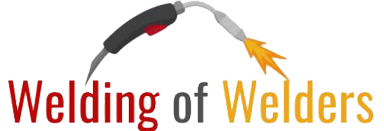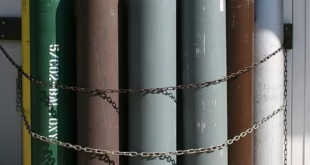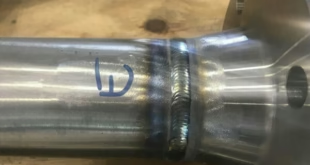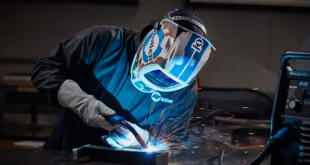How to Set MIG Welding Amperage and Wire Feed Speed
Metal Inert Gas (MIG) welding is a cornerstone in fabrication, manufacturing, and repair industries. Its efficiency and relative ease of learning make it popular, but achieving consistently high-quality welds hinges on understanding and controlling its core parameters. Among the most critical of these are amperage and wire feed speed (WFS). These two settings are intrinsically linked, acting as a dynamic duo that dictates heat input, penetration, bead appearance, and overall weld integrity. Misunderstanding or improperly setting these parameters is a primary cause of weld defects.
The Inseparable Link of Amps and Wire Speed
The critical concept to grasp is that MIG Welding Amperage and Wire Feed Speed are directly and proportionally related in standard Constant Voltage (CV) MIG welding power sources. Increasing the WFS demands more current from the power source to melt the wire at the faster feed rate. Decreasing the WFS draws less current. The power source automatically adjusts the amperage to maintain the arc as the WFS is changed (within its operational limits).

Maintaining Arc Stability and Proper Fusion:
This inherent link means you cannot effectively adjust one parameter without considering the other. If WFS is increased without a corresponding capability of the power source to increase amperage (or if the amperage is manually limited too low), the wire will feed faster than it can melt, potentially stubbing into the workpiece and creating an unstable, sputtering arc.
Understanding MIG Welding Amperage
What Is Amperage in MIG Welding?
Amperage is the primary factor controlling the amount of heat generated at the arc. This heat is responsible for melting the base metal and the filler wire, creating the molten weld pool necessary for fusion. In other words, Amperage refers to the amount of electrical current flowing through the welding circuit. In MIG welding, it governs the heat generated by the arc.
An increase in amperage results in a hotter arc and deeper penetration.
How Amperage Influences Weld Characteristics
The amperage setting in MIG welding impacts:
Penetration depth into the base metal
Bead shape and profile
Required travel speed to maintain arc stability
Incorrect amperage can lead to either:
Excessive heat input resulting in burn-through or distortion
Inadequate fusion and weak joints due to insufficient heat
Understanding Wire Feed Speed (WFS)
Definition of Wire Feed Speed
Wire feed speed (WFS) is the rate at which the electrode wire is fed through the MIG gun, usually measured in inches per minute (IPM) or millimeters per second (mm/s). This wire melts in the arc, providing the filler material that bridges the gap between the base metals and forms the weld bead.
Influence of Wire Feed Speed on Welding
Wire feed speed has a direct effect on:
The amperage produced by the machine (in constant-voltage systems, increasing WFS raises amperage)
The volume of filler metal deposited
Arc stability and metal transfer behavior
If WFS is set too high, it may result in an erratic arc and excessive spatter. If set too low, it can cause the arc to become unstable and lead to wire burn-back.
Setting Amperage and Wire Feed Speed
Step 1: Determine Material Thickness
Welding parameters must correspond to the thickness of the workpiece.
| Material Thickness | Wire Diameter | Suggested Amps | Suggested WFS |
|---|---|---|---|
| 1/16” (1.6 mm) | 0.023″ | 40–80 A | 90–150 IPM |
| 1/8” (3.2 mm) | 0.030″ | 90–140 A | 130–190 IPM |
| 1/4” (6.4 mm) | 0.035″ | 140–200 A | 190–300 IPM |
| 3/8”+ (10 mm+) | 0.045″ | 200–275 A | 250–500 IPM |
As a general rule, one amp per 0.001″ of material thickness provides an approximate starting point.
Step 2: Select Appropriate Wire Size and Type
The size and classification of the wire affect the suitable amperage and feed speed ranges:
0.023″ wire is typically used for thin-gauge materials
0.030″ to 0.035″ wire is suitable for general-purpose welding
0.045″ wire is used for structural or thick materials
Common classifications:
ER70S-6: Suitable for slightly contaminated or rusty base metals
ER70S-3: Recommended for clean, new steel
Step 3: Adjust Settings Based on Welding Position
Welding position influences arc behavior and molten metal control:
Flat and horizontal positions allow for standard parameter ranges
Vertical up welding typically requires reducing amperage and wire feed speed by approximately 10–15%
Overhead welding generally requires lower heat input to prevent molten metal from dripping
Step 4: Use Visual and Auditory Feedback for Refinement
Welders often evaluate settings by observing the molten pool behavior and listening to the arc. A stable arc with minimal spatter and consistent bead formation indicates appropriate parameters.
Parameter Examples Based on Application
Assume use of mild steel with a 75% Argon / 25% CO₂ shielding gas mixture.
Example 1: 1/8″ (3.2 mm) Mild Steel, 0.030″ Wire
Amperage: Approximately 120 A
Wire Feed Speed: 140–170 IPM
Voltage: ~18–19V
Recommended Stick-out: Approximately 3/8″ (10 mm)
Expected outcome: Stable arc, moderate penetration, and consistent bead shape.
Example 2: 1/4″ (6.4 mm) Mild Steel, 0.035″ Wire
Amperage: 180–200 A
Wire Feed Speed: 200–300 IPM
Voltage: 22–24V
To maintain proper weld pool control, straight beads or slight weaves may be used depending on joint design.
MIG Welding Amperage vs. Wire Speed Chart
| Wire Size | Amperage Range | Wire Feed Speed (IPM) |
|---|---|---|
| 0.023″ | 30–90 A | 90–200 |
| 0.030″ | 80–150 A | 130–250 |
| 0.035″ | 125–200 A | 170–340 |
| 0.045″ | 180–300 A | 250–500 |
These values serve as general starting points. Always verify equipment-specific recommendations.
Testing and Refining Settings
1. Reference Manufacturer Guidelines
Most MIG welders include a setup chart based on material thickness, wire size, and shielding gas. These values typically provide an effective starting point.
2. Observe Bead Characteristics
Indicators of appropriate settings include:
Uniform bead with good wetting at the edges
Minimal spatter
Proper fusion without excessive buildup or undercut
3. Common Issues and Corrections
| Observation | Possible Cause | Recommended Adjustment |
|---|---|---|
| Irregular popping or arc stutter | WFS too high | Reduce wire feed speed |
| Wire burns back into contact tip | WFS too low | Increase wire feed speed |
| Excessive spatter | Incorrect voltage or dirty base metal | Adjust voltage or clean work surface |
| Undercut at edges | Amperage too high or improper torch angle | Reduce heat or correct technique |
Voltage primarily affects arc length and fluidity. Adjusting voltage can help control bead shape and arc behavior independently of WFS.
Advanced Consideration
Advanced welding machines may allow independent adjustment of voltage and wire feed speed. In such cases, amperage is no longer tied exclusively to WFS, allowing finer control of weld characteristics.
In synergic systems, changes in WFS may automatically adjust voltage to maintain a consistent arc length.
Note: In conventional constant-voltage MIG systems, amperage is a function of WFS.
Summary of Recommended Parameters
Wire Stick-Out: Typically 3/8″ (10 mm)
Travel Angle: 10–15° push or drag angle, depending on technique
Travel Speed: Adjusted to match bead size and penetration
Shielding Gas: 75% Argon / 25% CO₂ for clean, low-spatter welds on mild steel
Conclusion
Setting MIG welding amperage and wire feed speed appropriately is essential for achieving structurally sound and visually acceptable welds. These parameters should be selected based on material thickness, wire size, joint configuration, and welding position. While reference charts provide initial guidance, final adjustments should be based on visual inspection, arc stability, and overall weld performance.
 Welding of Welders All about Welding and Welders
Welding of Welders All about Welding and Welders



